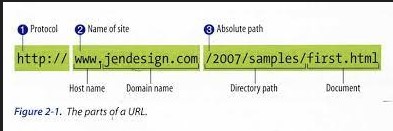Understanding the difference between absolute and relative links can be an important part of website management. Both types of links are used to link to other webpages, however, they each serve different purposes. In this blog, we will explore the differences between absolute and relative links, as well as when and why to use them.
In this blog, we will explore the differences between absolute and relative links, as well as when and why to use them.
Absolute links

Understanding the difference between absolute and relative links is critical for anyone creating content online. Relative links, as the name suggests, are links that are relative to the domain in which they are placed.
Meanwhile, absolute links are links that include the full URL of the page that they are linking to. These are often used to link to websites outside of the domain the content is currently in, making them ideal for linking to external sites.
Both types of links are important for ensuring that content can be easily navigated across the web.
Relative links

Understanding the difference between absolute and relative links can often be a challenge. To put it simply, an absolute link is a full URL that includes all the information necessary to reach a specific page, while a relative link is a shortened version that only works in the context of the page it’s on. Absolute links are great for linking to external pages, while relative links are ideal for linking within your own website.
To make things simpler, think of absolute links as a road map that provides directions from point A to point B, while relative links are like shortcuts that only work if you’re already on the right road.
Advantages & disadvantages of absolute links
When it comes to linking webpages, there are two main types of links: absolute and relative. Both have their advantages and disadvantages, so it’s important to understand the difference between the two and which one is best for your website. Absolute links are a full URL that point to a specific page, while relative links are a shorter version of the URL that point to a page relative to the page you’re linking from.
Absolute links are more precise, making them better suited for external links, while relative links are more flexible and easier to maintain, so they’re better for internal links. However, absolute links are better for SEO, as they provide more context for search engines, while relative links tend to be more user-friendly as they don’t require the user to type in the full URL.
Ultimately, it’s important to consider both the advantages and disadvantages of each before making a decision.
Advantages & disadvantages of relative links
When using links in webpages, it’s important to understand the difference between absolute and relative links. Both have their advantages and disadvantages, so it’s important to be aware of the pros and cons of each type of link.
Absolute links are great for linking to webpages outside of your own website, while relative links are ideal for pointing to pages within your website. Absolute links are more reliable when linking to external webpages, as they will not break if the original page changes its URL.
However, relative links are faster when linking to pages within the same website, since no additional URL information needs to be exchanged. Ultimately, choosing the right type of link depends on the context and the situation.
Best practices for using links
When it comes to links, there are two main types used on the web: absolute and relative links. It’s important to understand the difference between the two so you can ensure your website visitors have the best user experience. Absolute links (also known as “fully qualified URLs”) use the full URL of the link, including the domain name.
Absolute links (also known as “fully qualified URLs”) use the full URL of the link, including the domain name. Relative links (sometimes referred to as “relative paths”) use a partial URL, with the domain name omitted. Both types have their advantages and should be used in different contexts.
For example, absolute links are great for external links, while relative links are better for internal links, as they are more efficient and save bandwidth. Ultimately, it’s important to understand the difference between the two and use them accordingly to provide your website visitors with an optimal experience.
Final Touch
In conclusion, absolute and relative links are both useful for navigating website content, but they serve different purposes. Absolute links are useful for linking to external websites and resources, while relative links are useful for linking to content within the same website.
It is important to understand the differences between absolute and relative links to ensure that your website is functioning properly and efficiently.

